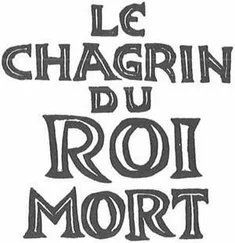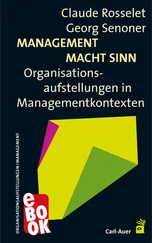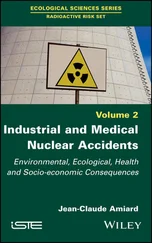1 Cover
2 Title Page Radioactive Risk Set coordinated by Jean-Claude Amiard Volume 5
3 Copyright First published 2021 in Great Britain and the United States by ISTE Ltd and John Wiley & Sons, Inc. Apart from any fair dealing for the purposes of research or private study, or criticism or review, as permitted under the Copyright, Designs and Patents Act 1988, this publication may only be reproduced, stored or transmitted, in any form or by any means, with the prior permission in writing of the publishers, or in the case of reprographic reproduction in accordance with the terms and licenses issued by the CLA. Enquiries concerning reproduction outside these terms should be sent to the publishers at the undermentioned address: ISTE Ltd 27-37 St George’s Road London SW19 4EU UK www.iste.co.uk John Wiley & Sons, Inc. 111 River Street Hoboken, NJ 07030 USA www.wiley.com © ISTE Ltd 2021 The rights of Jean-Claude Amiard to be identified as the author of this work have been asserted by him in accordance with the Copyright, Designs and Patents Act 1988. Library of Congress Control Number: 2021940534 British Library Cataloguing-in-Publication Data A CIP record for this book is available from the British Library ISBN 978-1-78630-722-4
4 Preface
5 Acknowledgments
6 1 Classifications and Origins of Radioactive Waste
1.1. Introduction 1.2. What is radioactive waste? 1.2. What is radioactive waste? A few definitions should be kept in mind. Radioactive waste is radioactive material for which no further use is planned or envisaged. Ultimately radioactive waste is radioactive waste that can no longer be treated under current technical and economic conditions, in particular by extracting its recoverable part or by reducing its polluting or dangerous nature (French Environmental Code, article L 542.1-1). Conversely, if a radioactive material also contains radionuclides, it has a potential future use. This is the case for depleted uranium or spent nuclear fuel that can eventually be reused. A radioactive substance is a substance that contains radionuclides, natural or artificial, whose activity or concentration justifies radiation protection control. The radionuclides contained in radioactive waste can be of artificial origin, such as cesium-137, or natural origin, such as radium-226. Radioactive waste has three main characteristics, the type of radionuclide, the activity and the half-life. The type of radionuclide contained is related to the radiation emitted (alpha, beta, gamma). The activity is the number of atomic nuclei that spontaneously disintegrate per unit of time; it is expressed in becquerels (Bq). The half-life is the time required for the activity of a radionuclide in a sample to decrease by half [IRS 13a, IRS 13b].
1.3. Classifications of nuclear waste 1.3. Classifications of nuclear waste Waste classification is not unique. Indeed, while the IAEA has provided broad guidelines for defining and classifying radioactive waste, each state is free to use its own nomenclature.
1.4. Origins of nuclear waste 1.4. Origins of nuclear waste Radioactive waste has multiple origins, which can be subdivided into three main sources: waste from the fuel cycle contributing to nuclear electricity (NFC, Nuclear Fuel Cycle), waste from other very varied origins (medicine, research, etc.) and waste resulting from a nuclear accident. Fuel cycle waste differs according to whether it comes from upstream or downstream plants or from nuclear power reactors in operation ( Figure 1.2 ). Figure 1.2. Diagram of the origins of radioactive waste (source: [OJO 14]). HLW: high-level waste; ILW: intermediate-level waste; LLW: low-level waste; NFC: nuclear fuel cycle; SRS: sealed radioactive sources. For a color version of this figure, see www.iste.co.uk/amiard/radioactive.zip
1.5. The global radioactive waste balance 1.6. Conclusions
7 2 Nuclear Waste Disposal Methods2.1. Introduction. How do we get rid of nuclear waste? What solutions are there for nuclear waste in the future? 2.2. Nuclear waste management 2.3. The special case of long-lived radioactive waste management 2.4. Conclusions
8 3 Management of Historic Radioactive Waste and Low-level Waste Around the World3.1. Introduction 3.2. Management of historical radioactive waste 3.3. International recommendations of the IAEA and NEA 3.4. Some examples of radioactive waste management 3.5. Radioactive waste outside the nuclear fuel cycle 3.6. Conclusions
9 4 Management of Intermediate- and High-level Nuclear Waste4.1. Introduction 4.2. International recommendations of the IAEA and NEA 4.3. High-level radioactive waste management and the public 4.4. Alternative solutions 4.5. Management of high-level radioactive waste by the various States 4.6. Conclusions
10 5 Nuclear Waste Management in France5.1. Introduction 5.2. Direct discharges into the environment 5.3. The inventory of nuclear waste in France 5.4. Nuclear waste management in France 5.5. The organization of storage for identified waste 5.6. The management of specific waste and waste without a channel 5.7. French challenges to the radioactive waste management policy 5.8. Conclusions
11 6 General Conclusions6.1. Introduction 6.2. The main problems concerning radioactive waste 6.3. Innovations in radioactive waste management
12 List of Acronyms
13 References
14 Index
15 End User License Agreement
1 Chapter 1 Figure 1.1. Proposed IAEA classification of radioactive waste (source: [IAE 09a]... Figure 1.2. Diagram of the origins of radioactive waste (source: [OJO 14]). HLW:... Figure 1.3. The various stages of the nuclear fuel cycles in open and closed ver... Figure 1.4. Summary of global inventories of solid radioactive waste in storage ... Figure 1.5. Global origins of radioactive waste in 2013 for A) storage and B) fi...
2 Chapter 2 Figure 2.1. Diagram of two basic barriers of a multi-barrier system in a nuclear...Figure 2.2. Model of a subsurface migration scenario across a fault fracture (so...Figure 2.3. Destruction by fission of a heavy nucleus  (X: symbol of the element;...Figure 2.4. The various solutions for managing radioactive waste and spent nucle...
(X: symbol of the element;...Figure 2.4. The various solutions for managing radioactive waste and spent nucle...
3 Chapter 3Figure 3.1. Application of the management system and the process of interaction ...Figure 3.2. Aspects included in the safety assessment (source: [IAE 12b]). For a...Figure 3.3. The four Japanese radioactive waste disposal projects (source: [NII ...Figure 3.4. Artificial barriers for subsurface storage of radioactive waste (sou...
4 Chapter 4Figure 4.1. Various stages in the management of low- and intermediate-level radi...Figure 4.2. Four stages of the normal evolution of the disposal system proposed ...Figure 4.3. Complementary safety assessment models and corresponding reference v...Figure 4.4. Illustration of how the integrated site description called the SKB a...Figure 4.5. Diagram for the theory of contradictory values (source: [QUI 83]). F...Figure 4.6. Type of message in relation to the context (A) and classification of...Figure 4.7. Stages in the site selection process in the United Kingdom (source: ...Figure 4.8. Diagram of the copper container selected by Sweden to store spent fu...
5 Chapter 5Figure 5.1. Schematic representation of the radioactive waste management chain (...Figure 5.2. The main actors and the various spheres involved in radioactive wast...Figure 5.3. Evolution of the ease of retrieval (recoverability) and passivity (s...
1 Chapter 1 Table 1.1. French classification of radioactive waste and storage sites in opera... Table 1.2. Excerpt from the US NRC classification of radioactive waste based on ... Table 1.3. The British nuclear waste classification system (source: [OJO 14, RAH... Table 1.4. Practical classification of radioactive waste in Russia (source: [OJO... Table 1.5. Comparison of IAEA ([IAE 09a], GSG-1) and NRC ([NRC 15]) classificati... Table 1.6. Comparison of radioactive waste classifications in Belgium, France an... Table 1.7. Examples of the use of the IAEA classification for disused sealed rad... Table 1.8. Quantities of radioactive waste (m3.GW-1) and spent fuel (t.GW-1.yr-1... Table 1.9. Radioactive waste dumped in the Kara Sea in the Arctic Ocean in 1993-... Table 1.10. Quantities of radioactive waste generated during the decommissioning... Table 1.11.
Читать дальше

 (X: symbol of the element;...Figure 2.4. The various solutions for managing radioactive waste and spent nucle...
(X: symbol of the element;...Figure 2.4. The various solutions for managing radioactive waste and spent nucle...










